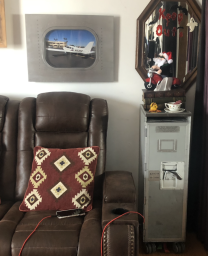
Key words in practice:
- bite-sized
- small
- chunk
- slice of pie
- nuggets
- short
"Relatively short engagements in learning-related activities - typically ranging from a few seconds up to 20 minutes (or up to an hour in some cases) - that may provide any combination of content presentation, review, practice, reflection, behavioral prompting, performance support, goal reminding, persuasive messaging, task assignments, social interation, diagnosis, coaching, management interaction, or other learning-related methodologies." - Will Thalheimer, 2017.
Characteristics of micro-learning
- Brevity: Microlearning events are short, though there is no defined duration.
- Granularity: Due to their brevity and purpose, microlearning focuses on a narrow topic, concept, or idea.
- Variety: Microlearning content can be in the form of a presentation, activity, game, discussion, video, quiz, book chapter, or any other format from which someone learns.
How is learning acquired?
- Must touch information multiple times, preferably in different ways, to move it from short term to long term memory
- To learn, we need: time, goal-orientation, supposrtive feedback, accumulate successful practice, and frequent review
(Hattie & Yates, 2014)
Microlearning can be applied to almost all content in the form of stand alone nuggets or as a series of nuggets threaded in a learning path.
Microlearning may not work in a few situations where the concept is too complex and where it makes more sense to present the content as a single larger learning unit.
Very brief lessons and learning activities are becoming more common.
When the audience and content can benefit from extreme chunking, well-designed microlearning seems to be a good strategy.
Some examples of uses:
- Learning languages or topics that require repetition
- Learning a software application
- Business processes and procedures
- Practicing micro skills that build into larger skills
How to do it (3 basic principles):
1. Make learning modules/updates mobile compatible
2. Less information at a time
3. Include as much interaction as possible
Seven Categories of Martin's Micro Activities:
- 5 minute papers
- visual learning
- critical thinking
- assessment
- encouraging discussion and interaction
- discussion and debate
- pop culture
Numbers Don’t Lie: Why Bite-Sized Learning is Better for Your Learners (and You too)
Is Microlearning the solution you need?
Why adopt microlearnig - 15 questions answered
Why Microlearning Is HUGE And How To Be A Part Of It
Amy Marin (Dept. of Social and Behavioral Sciences; Phoenix College)
(Note: 3 minutes is a good amount of time for a micro-activity)
Mindful Moments: 50 Micro-Activities for Energizing the College Classroom
5-Minute Papers
1. Question of the Day
Start class with a question about the day's topic or readings students were to complete. Answers can be used in a variety of ways, including discussions and debates.
2. Definitions
Students are given 3-5 minutes to come up with a definition of the day's topic. The instructor can call on students to share their definitions, and the definitions can be compared with the textbook definition.
3. One-minute bio
After learning about the work of an important figure/theorist, students are given 3-5 minutes to write an obituary, a toast, a book jacket bio, or a poem about that person.
4. Everyday Example
Students are given 3-5 minutes to come up with an everyday example of course concept.
5. What do you want to know?
Students are given 1-2 minutes to generate a question involving the day's topic. Instructors can use these in several ways. The instructor can call on students to read their questions for a class discussion or collect the questions and then answer them. Or they can be collected at the end of class and the instructor can use them to guide the lecture for the next class.
6. Bookend
At the beginning of class, students have 1 minute to write down what they know about the day's topic. At the end of class, students have 1 minute to write down what they know about the day's topic. and how that might have changed since the beginning of class. Students can turn in both their pre and post descriptions.
7. Where are we?
At the beginning of class, students are given 3-5 minutes to look over their notes and summarize the main point from the previous class period.
Visual Learning
8. Graphic Organizers
Students have 3-5 minutes to take the information they learned in class that day to organize it visually. This can include the use of affinity diagrams, Venn diagrams, concept maps, etc. (The instructor will probably need to provide examples of how information can be organized using graphic organizers the first time.)
9. Cartoon Analysis
Show students a cartoon that illustrates a course concept. Students have 1 minute to identify the concept and can then share/explain their analysis.
10. Visual Quiz
The instructor displays a picture that illustrates a concept and then quizzes students. For example, the instructor could show a photograph of a person playing a slot machine at a casino and could ask "Is this person being rewarded on a fixed-ratio, variable-ratio, fixed-interval, or variable-interval reinforcement schedule?"
11. YouTube
Play a 30 second clip from YouTube that illustrates a course concept. Ask students to explain the concept being illustrated.
12. Design a tattoo
Students have 5 minutes to design a tattoo that illustrates a course concept covered that day. The instructor can then display the student work (use a doc cam, everyone takes a pic and posts to a class Twitter feed or Instagram account), and students can guess the concept.
13. Low-Tech Pictionary
Students pair up and Student A draws a concept from the day's lecture while Student B guesses. Students then switch roles. Students can be asked to turn in their drawings.
14. Pictionary
The instructor can draw a concept using the whiteboard, smart-board, or a doc cam setup. If desired, the students can be divided into teams and points given for the correct response.
15. Visualize it!
Ask students to close their eyes for one minute and visualize a course concept (e.g. "Picture a psychologist at work"). Students can then write or share their responses.
Critical Thinking
16. Solve it!
The instructor poses a problem to the class. Students try to solve the problem based on the information prsented in the day's lecture. The instructor can call on students to share their solutions and ask students to turn in their written solutions
17. Dear Abby
A modified version of the Solve it! exercise, the instructor reads a fictional scenario involving dilemma concerning a course topic. Students have 3 minutes to draft a response to the person using support from the class text or lecture.
18. Case study
Students have 3 minutes to write a brief description of a demonstration of a potential problem related to a course concept. Afterwards, students trade their "case study" with another student and students try to solve the issues outlined.
19. Mnemonics
Students are given 1-2 minutes to generate a mnemonic device that will help them remember a concept from the day's lecture. Students can then share their strategies with a partner, or the whole class.
20. Find the lie
Students write down 3 statements about the days lecture. Two are true, and one is a lie. Students partner with another student and read their statements. Their partner tries to guess which one is incorrect.
21. Making connections
Students have 3-5 minutes to tie a concept they learned in class that day to a concept presented earlier in the semester.
22. Who could use it?
Students have 3-5 minutes to think about and write down how a concept from the days lecture could be useful information for others - such as friends, family, neighbors, etc.
Assessment
23. Rose and thorn
At the end of class, students have 1-2 minutes to write down their "rose" (the thing that they most enjoyed or found interesting about class that day) and their "thorn" (the one thing they found most difficult or least enjoyable).
24. Minute Essay
Instructor presents an essay question. Students are given 3 minutes to write a short answer to the question. Instructor can call on students to read the answer, compare answers to the question. Instructor can call on students to read the answer, compare answers with a partner, or can collect the answers to assess mastery of the course.
25. Check your notes
Students are given 3 minutes to compare their notes with the person next to them. Did they come away with the same important points as their neighbor? This is a great opportunity for peer teaching and review. This can be done via Google Docs - have a class document where everyone takes notes on their own and then merges them together.
26. Muddiest Point
Students are given a few minutes at the end of class to write down the most difficult or most confusing part of the material from the day's class. The answers can be addressed before the next class period or at the start of it.
27. Quick Quiz
Instructor can quiz the class with True/False questions using a Student Response System ("clicker" devices). If instructor does not have access to this type of technology, students can hold up their hands for "true" or an object (e.g. pencil, cell-phone, ball-cap) for "false" or different colored index cards can be used.
28. Main Point
At the end of the lecture, students are given 2 minutes to summarize the main point. These summaries enable instructors to asess how well students are understanding the material.
29. Sum-it-up
During a lecture there are usually natural breaks in material where instructors move from one topic to another. Try pausing for 3-5 minutes at these transition points and allow students to look over their notes and write a brief summary of that material in their notes. To maintain accountability, randomly call on several students to read their summaries.
Encouraging Student Interaction
30. Brainstorm Blitz
Students pair up and have 1-2 minutes to brainstorm as many examples of a concept as possible and then use them to jumpstart a class discussion.
31. Tea-time
Instructors pose a questionor topic to the class. Students partner and have 3 minutes to discuss the topic. Students are given a final minute to come to a conclusion or consensus from their conversation that can be shared with the class.
32. What's on my back?
Using sticky notes, tape a concept on each student's back. Students have 5 minutes to guess what's on their back by asking questions of other students that can be answered with "yes" or "no".
33. Test Prep
Students have 1-3 minutes to write a sample test question from the day's lecture. Students then quiz the person next to them. All students hand in their questions at the end of class.... And perhaps one or more of them appear on the actual exam.
34. Role Play
Students partner and act out or play a role assigned by the instructor. Instructors can then call on a couple of students to perform their role play for the entire class.
35. Active Listening
Students pair with a partner. Student A has 1 minute to speak on a topic while Student B listens. Student B is given 1 minute to paraphrase what Student A has said. Students then switch roles and repeat. Instructors can call on the "listeners" to paraphrase what their partner has said.
36. Show and Tell
Students turn to their partners and have a conversation about how the course concept being discussed applies or does not to them.
Discussion and Debate
37. Body vote
The instructor reads a statement. Students who agree move to one side of the room. Those who disagree move to the other. Those undecided put themselves on the spectrum in the middle. Instructor can ramdomly call on people to explain/defend their position.
38. Beach ball
Instructor starts by handing/throwing an object to a student (e.g. inflatable beach ball or a foam ball). That student contributes to the discussion. That student then passes the ball to someone else, and they give their response.
39. See it both ways
The instructor presents a controversial statement. Students are given 1 minute to write down as many arguments as possible for the "agree" side. Students are given a second minute to generate arguments for the "disagree" side. Responses can be used in a number of ways including think-pair-shares, comparisons, discussions, and debates.
40. Let's Mingle
The instructor poses a controversial statement. Students are given 5 minutes to stand up and "mingle" with other students, as if at a party. They must interact with at least 3 other students in the room, discussing their topic and listening to those of others. The instructor can then call on students to recap the main points of their conversations.
41. The Great Divide
The instructor divides the class in half. The instructor assigns one half to argue the "pro" side of a controversial topic and the other half to argue the "con" side. Students are given 1 minute to write down one argument. The instructor can call on students to present their argument. This activity encourages students to think about topics from multiple perspectives.
42. Strongest Counterpoint
When given a controversial topic, students identify the strongest counterpoint to their position. Students have 2-3 minutes to write their answer.
43. Complete a Survey
Instructor presents several items from a survey for students to answer. Scoring and responses can then be discussed.
Pop Culture
44. Twitter talk
Students are given 1-2 minutes to summarize (e.g. the definition of prejudice) using no more than 140 characters. You can call on people to read their "tweets".
45. Google-it
Students are given 5 minutes to find out information on a spceified topic using their phone, tablet, or laptop. The instructor can then call on students to share. This can lead to interesting discussions or comparisons between "lay" information and actual science.
46. American Idol
Students pretend to be a contestant in American Idol. The theme for the week is a course topic. They must select a song that illustrates that ocncept and be ready to defend their song choice.
This is an audience response system that uses phones and the web to gather live responses and displays them in real time in PowerPoint graphs. This online service is free to classes with less than 40 students. In a minute or two, you can ask students a question, and display their responses in a graph form.
48. Your discipline in the news
Ask students to bring in a news clip or advertisement that illustrates a course concept (the instructor can be specific about what to look for). Students can randomly be selected to share their new clipping/ad in 1 minute or less. Students can switch clippings with a partner and read/write/identify the concept in their partner's finding.
49. My Facebook Wall
Students put their name at the top of a sheet of paper and have 1 minute to write an interesting question about the day's topic. This sheet becomes their "wall". Students pass the sheet to the right. Students have 1 minute to add ansers, questions, or comments to the original poster. This process is repeated each minute for as long as the instructor cares to go. At the end, the papers are returned to the original authors, giving them a chance to see what other students wrote on their "wall".
50. Text a friend
Imagine you are texting a classmate who missed today's class. In just a sentence or two, describe the topic. What is the "take home message" for the day?
Adobe Acrobat document [14.2 KB]
Contact Me
Sarah Nilsson, J.D., Ph.D., MAS
602 561 8665
You can also fill out my
Get Social with Me
Legal Disclaimer
The information on this website is for EDUCATIONAL purposes only and DOES NOT constitute legal advice.
While the author of this website is an attorney, she is not YOUR attorney, nor are you her client, until you enter into a written agreement with Nilsson Law, PLLC to provide legal services.
In no event shall Sarah Nilsson be liable for any special, indirect, or consequential damages relating to this material, for any use of this website, or for any other hyperlinked website.
Steward of
I endorse the following products
KENNON (sun shields)








